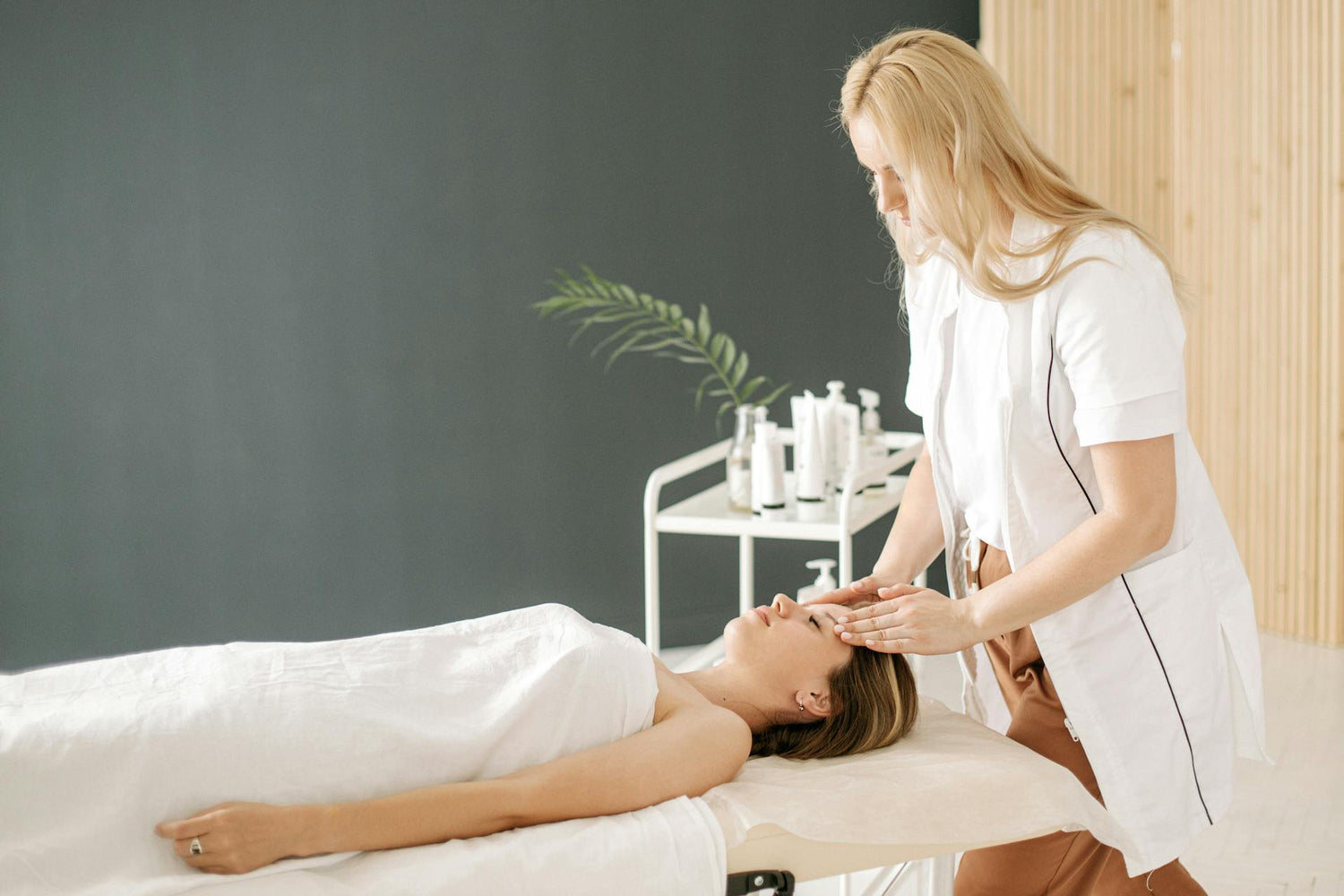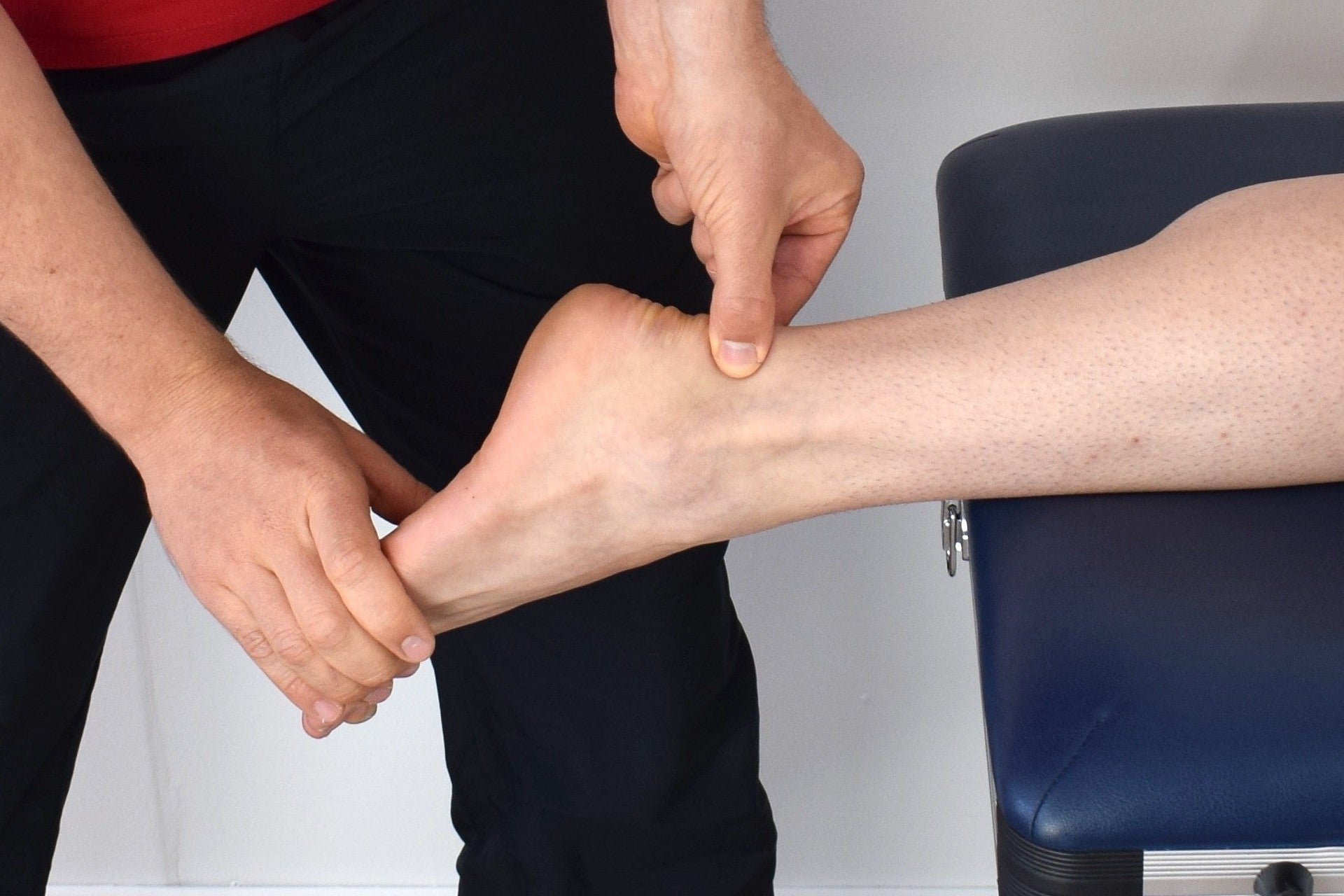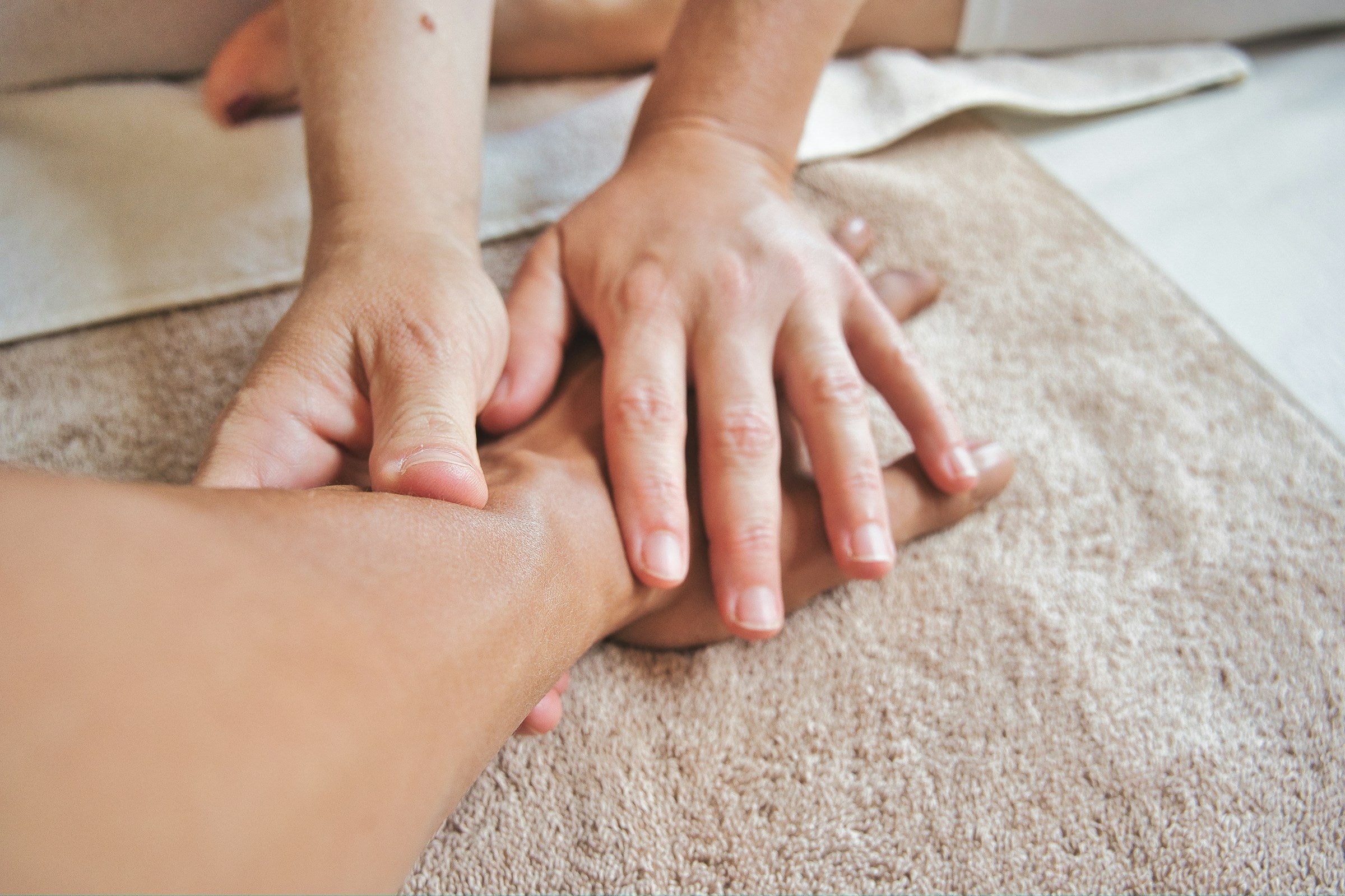Whether you’re after simple relaxation or relief from everyday muscle soreness, massage can be one of the best ways to give yourself some TLC. But beyond stress and pain relief, people often turn to massage to help boost the body’s lymphatic system.
Your lymphatic system is made of 600+ nodes, ducts, and vessels that constantly clear toxins and waste from your body. But can massage really help promote healthy lymph flow? And if so, how can you try it safely?
Read on to learn about lymphatic drainage massage, including its benefits, how it works, and how to know if it’s the right choice for you.
The Role of Your Lymphatic System
As your circulatory system pushes blood through your body, it delivers fresh oxygen and nutrients to your muscles, bones, and other tissue. But during this process, waste products and excess fluid get left behind.
Your lymphatic system is made of a vast network of nodes, vessels, and organs that filter out these waste products and help balance the fluid levels in your body. Because this system does so much “clean up” work, it’s also sometimes called your body’s sewerage system.
Your lymph nodes help control fluid balance in the body, and they also produce immune cells to help protect you from infections. But beyond that, all of the organs in your lymphatic system play an important role in:
- Helping you absorb fat and fat-soluble vitamins
- Healthy intestine function
- Protecting you from intruders like bacteria, viruses, parasites, or other pathogens
Symptoms of Poor Lymphatic Drainage
Sometimes, health problems like cancer or infections can cause the lymphatic system to become “sluggish” or blocked. But you might also experience poor lymphatic drainage after a treatment or surgery that impacts lymph nodes, like breast cancer treatment.
For most people, the main sign of poor lymphatic drainage is lymphedema. Lymphedema can happen anywhere in the body, but many people most often notice it in the arms or legs. The NHS states that without treatment, this swelling often gets more persistent and problematic over time.
Symptoms of lymphedema may include:
- Swelling, achiness, or heaviness in the affected area
- Changes in skin texture or color
- Less range of motion and flexibility in your joints
- Feeling of tightness in your clothes, jewelry, or accessories, even if you haven’t gained any weight
What Is Lymphatic Drainage Massage?
When you have poor lymph flow, there are a variety of treatments that may help you manage it — like exercise, compression tools, or, in more serious cases, surgery. But for some, manual drainage techniques like lymphatic drainage massage can also be a helpful self-care tool.
Lymphatic drainage massage was invented in 1932 by Danish physiotherapist, Dr. Emil Vodder. It’s also called manual lymphatic drainage, or MLD. Unlike other kinds of massage, MLD uses a very light touch and gentle movements that aim to match the natural rhythm and flow of your lymph system.
The reason for its light pressure is that lymph fluid isn’t very deep in your muscle tissue. Instead, it’s just under the surface of the skin. So, rather than use deep pressure, MLD therapists can use softer techniques that gently “nudge” the lymph fluid to help ease swelling in blocked areas.
Benefits of Lymphatic Drainage Massage
The potential benefits of lymphatic drainage massage include:
- Reducing swelling, bloating, or puffiness
- Encouraging the flow of lymph fluid
- Promoting healthy blood circulation
- Deep relaxation and stress relief
- Supporting healthy sleep and energy levels
While people have used MLD for decades to ease swelling, massage experts and researchers are still working out the “whens” and ‘’hows” around its benefits.
For example, a 2023 article from the American Massage Therapy Association (AMTA) notes that the timing and frequency of MLD likely play a role in its positive effects. The author also mentions that studies are still looking at emerging, broader benefits of this gentle technique — like relieving fatigue and pain in certain populations.
When Can Lymphatic Drainage Massage Be Helpful?

Whether you’re looking to promote healthy lymph flow or simply ease pain, this feathery-light massage technique could make a positive difference in your well-being. But there are specific situations when a health team might recommend MLD as part of a person’s care plan.
Cases where MLD might be helpful include:
Lymphedema After Cancer Treatment
Care teams may sometimes recommend lymphatic drainage massage for those who have had cancer treatment. Specifically, it may be useful for those who have received treatment for breast cancer.
Cancer and its treatments often come with complications. So, this type of therapy should only be used with the OK of an oncology team. And to stay on the safe side, it’s always important that it’s performed by trained health professionals certified in treating lymphedema.
Fibromyalgia
For those with fibromyalgia, lymphatic drainage massage may come with a wide range of benefits. Not only can gentle massage help encourage the flow of lymph fluid, but it may also help ease pain, stiffness, and muscle tension.
In addition, a 2021 review of studies, found that myofascial therapy (a type of massage) and MLD both boosted quality of life scores in patients with fibromyalgia.
Rheumatoid Arthritis
Rheumatoid arthritis (RA) is a chronic pain condition that involves the immune system and joint pain. Many people with different types of arthritis may benefit from massage, and the especially gentle touch of MLD may be soothing for some with RA.
Other Health Conditions
With your doctor’s guidance, you may be able to try MLD for other health conditions that affect lymph flow. There are many ailments and treatments that can cause poor lymphatic drainage, but some main ones include:
- Genetic disorders
- Surgeries
- Injuries or trauma
Risks and Considerations
Before you try lymphatic drainage massage, you should always talk to your doctor about whether it’s safe for you. This is because certain conditions can be “contraindicated” for massage or MLD. In other words, they might interact poorly with the massage or increase your risk of side effects.
Be sure to hold off on massage and ask a doctor first if you:
- Have a current illness or infection, or are on antibiotics
- Have a history of blood clots or deep vein thrombosis (DVT)
- Have organ or heart failure
- Have cancer and/or are currently undergoing cancer treatments
- Are pregnant
- Are taking medications such as blood thinners
- Aren’t sure if massage is safe for a health condition you have or medication you’re taking
How To Do Lymphatic Drainage Massage: 3 Self Techniques
The good news is that because lymphatic drainage massage involves such gentle pressure, it’s easy to try on yourself from the comfort of your home. But before you get started, here are a few tips to help you reap the maximum benefits from your sessions:
- Be sure to keep your pressure very light. After all, you’re trying to target the fluid just under the skin — not necessarily your muscles or fascia.
- Be sure to keep your body in a comfortable position.
- Keep your hand loose and relaxed while you massage.
With these tips in mind, here are three simple self-lymphatic drainage massage techniques to help give your body a boost:
1. Easy Head & Neck Lymph Massage
As you might know, there’s a large network of lymph nodes and vessels in your face, jaw, and neck region. Fortunately, this simple technique can help you soothe the muscles and encourage lymph flow in this area:
- Start by sitting upright, and taking a deep, calming breath.
- Place both hands at the base of your neck, and use very gentle pressure to push the tissue upward.
- Then, with your hands under your jaw at the top of your neck, lightly massage down and back in a “C” motion.
- Repeat the “C” motion 8–12 times.
2. Upper Body Lymph Stimulating Massage
This easy technique can help encourage healthy lymph flow throughout your arms and upper body. (For a more in-depth guide on self-lymphatic drainage, be sure to check out this educational resource from a physical therapist and lymphedema specialist.)
To start:
- Take five deep, big belly breaths.
- With both hands, place your index and middle fingers on opposite outer sides of your collarbone.
- Gently glide the fingers toward the center of the collarbone. Repeat 10–15 times.
- Using your whole hand, massage in large, gentle circles on the outer upper side of the right collarbone, toward your trapezius muscle. Repeat 8–10 times, and repeat with the other side.
- Lift your left arm, and use your palm to gently massage in circular motions under the armpit 8–10 times.
- Then, repeat the circular motions on the right groin.
- Switch to the right armpit, repeating the circular motions another 8–10 times.
- Finally, finish by repeating the motions on the left groin area.
3. Face and Sinus Lymphatic Drainage Massage
This upper body massage can help facilitate lymph flow in the face, jaw, neck, and sinus region. Like with other lymph massage techniques, you’ll want to start with a few deep, calming belly breaths. From there:
- Separate your fingers on both hands so there is a gap in the middle. (It should look like you’re holding your fingers in a “V” position.)
- Place the “V” of your hands on both ears, so that your earlobes are in the center of your fingers.
- Gently massage down toward your chin.
- With feathery-light pressure, push in with your palms back up toward your ears. Release the pressure, and repeat the motion 8–10 times.
- Now, straighten all of your fingers. Place both hands on either side of your nose, just under the eyes.
- With an outward motion and light pressure, massage your way downward in a small, half-circle motion. Release the skin, and repeat two more times until you reach the top of your mouth.
- Start back at the top of the sinus area, and repeat 5–12 times.
What Should You Do Before Lymphatic Drainage Massage?
Generally, it’s best to prepare for lymphatic drainage massage like you would with other types of massage. The main first step is to hydrate. Giving your body ample fluid is a great way to ease muscle tension. Plus, plenty of water can help promote healthy lymph flow while reducing fluid retention.
Beyond that, it’s best to eat a light, clean meal, and avoid alcohol (or too much caffeine) before heading to your session. And because MLD may cause your bladder to fill faster, it’s also a good idea to use the bathroom before you get started.
Where Can I Get a Lymphatic Drainage Massage?
If you’re looking to try MLD for a health condition, it’s essential to work with a certified lymphedema specialist, and ideally, someone trained and experienced in working with your specific condition.
Certified lymphedema specialists are people who provide lymphatic drainage massage, often in medical settings. Because they are certified, you can rest assured that they’ve gone through dozens of hours of training to help them understand the lymph system and how to best support it. They also often double as licensed physical therapists or other medical professionals. If you want to visit one of these therapists but aren’t sure where to look, your healthcare team can help point you in the right direction.
General massage therapists are also often trained in lymphatic techniques — but they don’t always specialize in it. If you don’t have a health condition and just want to support your well-being with lymph-boosting massage, you can ask your local spa or massage clinic if they have any therapists with expertise in these techniques.
Other Ways To Support the Lymphatic System
Whether you have a health condition, are recovering from surgery, or just want to stay healthier as a whole, here are a few more steps you can take to promote a healthy lymphatic system:
Exercise
According to Cancer Research UK, movement and exercise have been shown to promote healthy lymph flow. And it makes sense — one of the main ways that your body moves lymph fluid is through muscle contractions. However, not all types of exercise will work for everyone, especially if you have lymphedema from a health condition, surgery, or cancer treatment.
When starting a new movement routine, the golden rule is to start gently and work your way up to higher intensity. The easiest ways to get your body moving include:
- Yoga
- Tai chi
- Walking
- Swimming
- Cycling
- Pilates
In addition, the best way to ensure you reap the long-term benefits of your new exercise routine is to stick to it. This means finding ways to integrate it into your weekly or daily routine, even if that means getting your body moving for just 5-10 minutes per day at first.
To achieve this, it can help to tie your new exercise habit to something you already do every day. For example, you could start by doing a gentle home workout after you have your coffee each morning. After repeating this a few times, the coffee becomes a subconscious “cue” that makes it easier to stick to your routine in the long run.
Diet and Hydration
Cleaning up your diet can help limit the amount of waste and toxin buildup in your body. A good start might be to cut back on ultra-processed foods — like breakfast cereals or cured meats — and swap them out for more whole foods, like fruits, leafy greens, and less-processed protein sources.
It’s also essential to get plenty of water each day — both directly and from foods — to help with fluid balance. Beyond that, specific nutrients that can support the lymphatic system include:
- Protein from sources like chicken, fish, nuts, and eggs
- Vitamin C from oranges, apples, berries, and other fruits
- B vitamins from foods like salmon, potatoes, and bananas
- Omega-3-rich foods like walnuts, tuna, and other fatty fish
Other Tools and Lifestyle Tips
Aside from exercise and a nutrient-rich diet, here are a few more tools and lifestyle tips that can help your lymphatic system function at its best:
- Practice regular deep breathing, as it may help boost your lymphatic system by shifting the pressure in your chest and abdomen.
- Cut back on tobacco and alcohol to help reduce the strain on your body’s cleansing organs.
- Pay attention to your body positioning and use gravity to your advantage to help with the flow of fluid.
The Takeaway
Lymphatic drainage massage or manual lymphatic drainage (MLD) is a calming, gentle way to promote the flow of lymph fluid in the body. Almost anyone can use it to experience benefits like stress and muscle tension relief. However, its feathery-light touch may be extra beneficial for people who want to debloat or ease swelling in the body.
For those with medical conditions — or who are undergoing cancer treatment — it’s key to work with a doctor to decide whether MLD is right for you. With their go-ahead, you can work with a certified lymphedema therapist to better support your lymphatic health and overall well-being.
For more ways to add massage to your self-care routine, you can also try a physician-trusted tool like those from MedMassager. Pick up the MedMassager Foot Massager or Body Massager Plus today, or learn more about the many ways they can bring relief.



